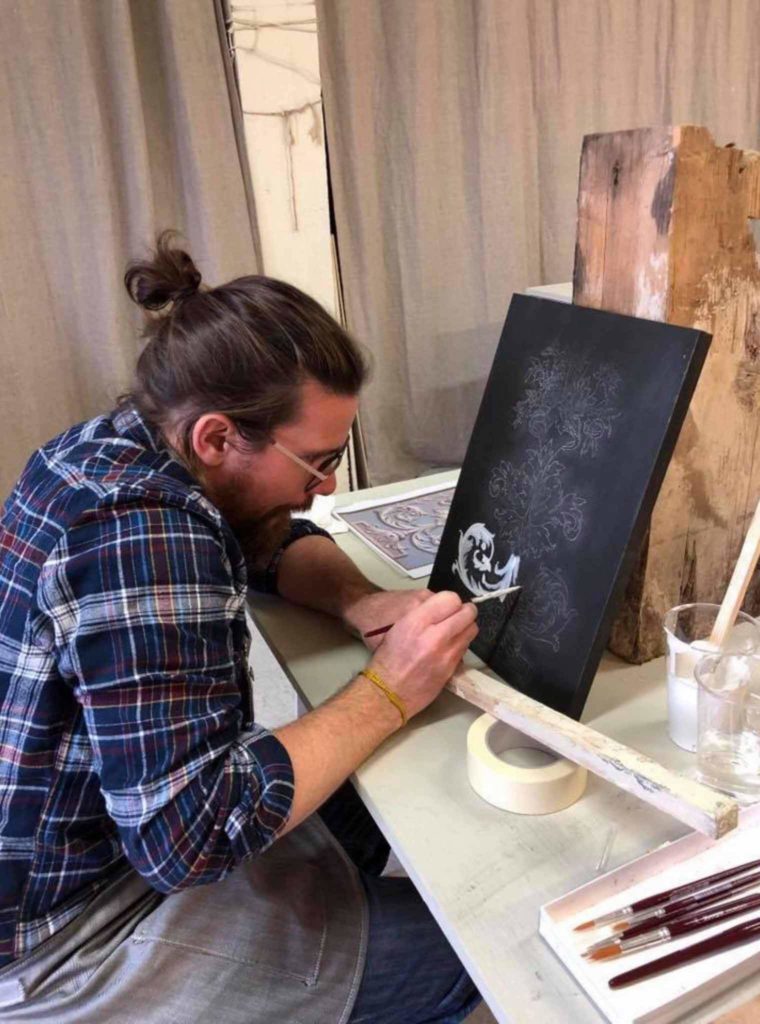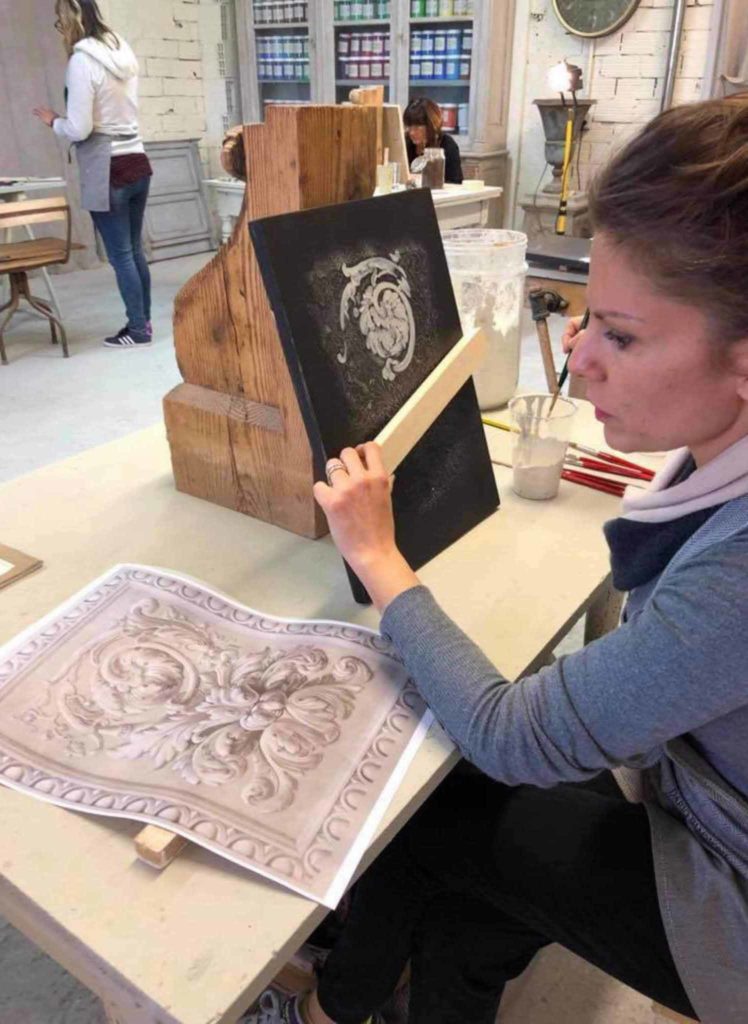
In this class you’ll learn ho to use traditional techniques and natural products for decorating wood surfaces.
Man has been using every kind of pigment for decorating his home. Everyday life and fantasy were his inspirations and in this way the art of decoration was born, an artistic tradition passed down from father to son.
Like other human life’s facets, art of decoration’s history has been distinguished by recurring cycles: just think about the marbling technique used in the Ancient Egypt and in the XVIII century’s Bavaria. The evolution of this art depended on the available materials and on the commercial relations between different cultures.

In Africa, where is still possible to cherish the earliest figurative art’s expressions, art is a fundamental part of people and tribes. Its simplicity, spontaneity and originality had a strong influence in Western arts.
In the Bavarian and Swiss Alps, prospered a decorative art called Bauernmalerei (“farmers’ painting”, in fact farmers were the main buyers of this kind of art). At the beginning the decorations’ motif was very simple and was painted directly on the raw wood; later, in order to hide wood’s imperfection and to disguise poor wood, the pieces of furniture were completely painted. Black and green were the most used colors and the technique of imitating the wood’s grain was very common. The houses were completely decorated.

In France, especially in Provence, during XVI-XVII century, the decorative art that imitated the Eastern style was very sought-after, its peculiar asymmetry was flanked by spirals and curls. For those decorations were used the less precious and inadequate for carving woods.
Swedish folk art was distinguished by neoclassic and Gustavian traits, that faded away with the passing of time but remained accurate in colors and lines.
In Mediterranean countries the art of decoration and pottery developed simultaneously. In the ancient Greece, urns were decorated with human figures, vegetation and geometrical borders. In Spain, the Arab occupation left as legacy brilliantly colored mosaics, rich stucco and gold platings. The fashion for painted furniture flourished in Northern Italy, especially in Tuscany. Today, Mediterranean tradition’s ornamental motif can be found on pottery, decorated with strong contours outlined by pure colors.

During the class we’ll concentrate in particular on the Grisaille technique, that’s very useful to add personality and grace to the surfaces, through the representation of ornaments, trophies and alcoves.
Many artists of the Renaissance, like Mantegna and Andrea del Castagno, used Grisaille in their paintings to simulate sculpture; Grisaille is a very old technique and at the same time a modern one, just think about that Cappella Sistina’s paintings on the ceiling are divided by false sculptures made with this technique. Grisaille can underline and embellish surfaces’ shapes harmonizing them with the surroundings. Only through a meticulous study of the colors we will be able to paint a picture that, thanks to the tone on tone effect, will seem tridimensional.
At the end of the decoration we’ll use the old patina technique on the surface.
For this class I’ll provide you all the necessary materials.
Price for Corso on decoration (3 days) Contacts
For everyone who already attended any Patina Style class will be applied a 10% discount.
Number of students for class: 5 – 7.
This class will start on the first day at 10 am and it’ll end the last one at 4pm. 18 hours of class. For accommodation I recommend you Locanda di Alberi, beautiful bed and breakfast in the countryside near Borgo San Lorenzo, and Hotel Locanda degli artisti, (if you contact this accommodation facility you’ll have a special offer) a very peculiar accommodation facility right in the town centre.
For information feel free contact us:
To confirm your participation you’ll have to pay (for info please Contacts) in advance at the moment of the application, with a bank transfer to this bank account BCC MUGELLO IBAN IT07M0832538160000000110053, SWIFT Code ICRAITR1920, writing your name and the class of your choosing, or you can use this PayPal link.